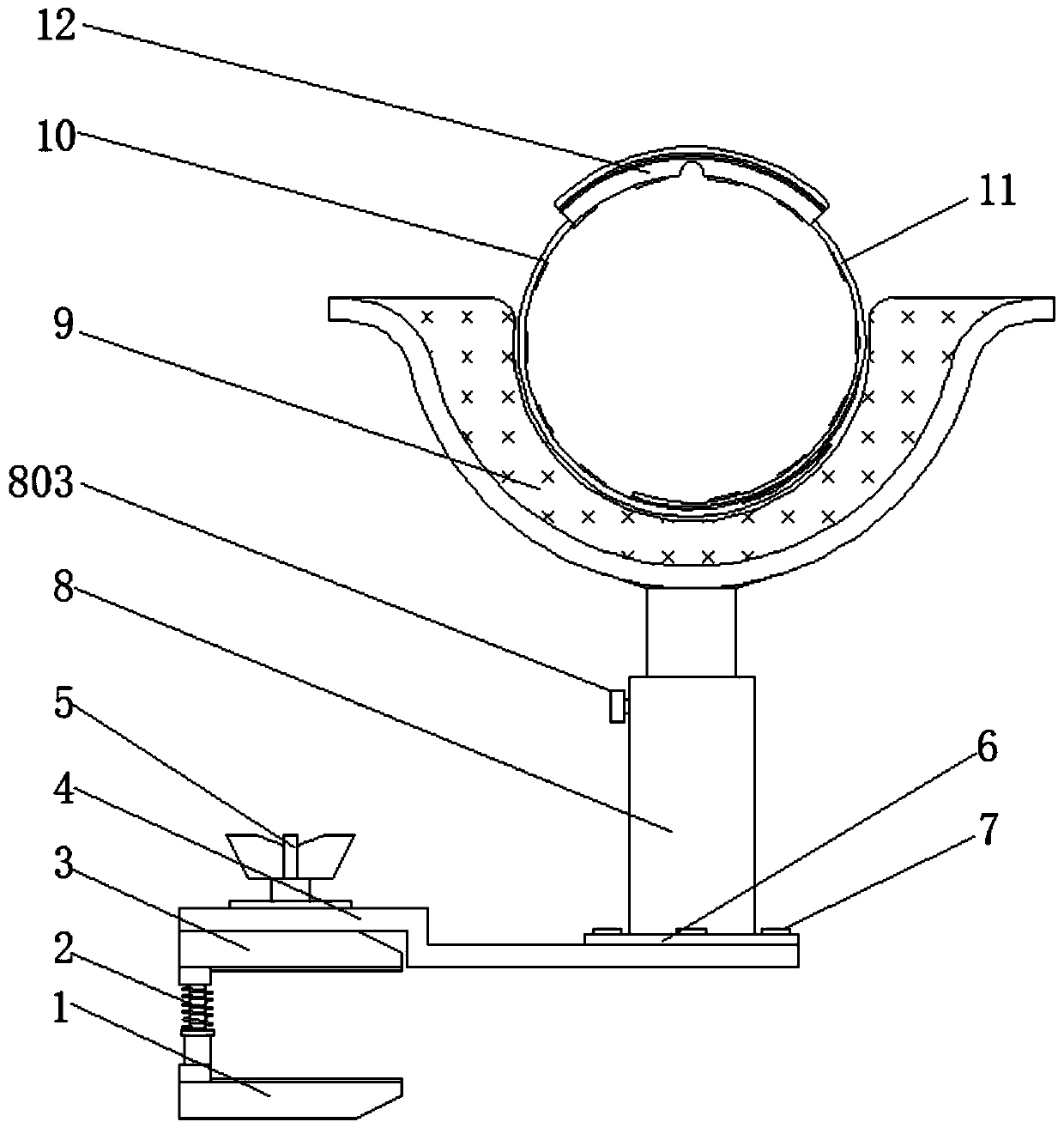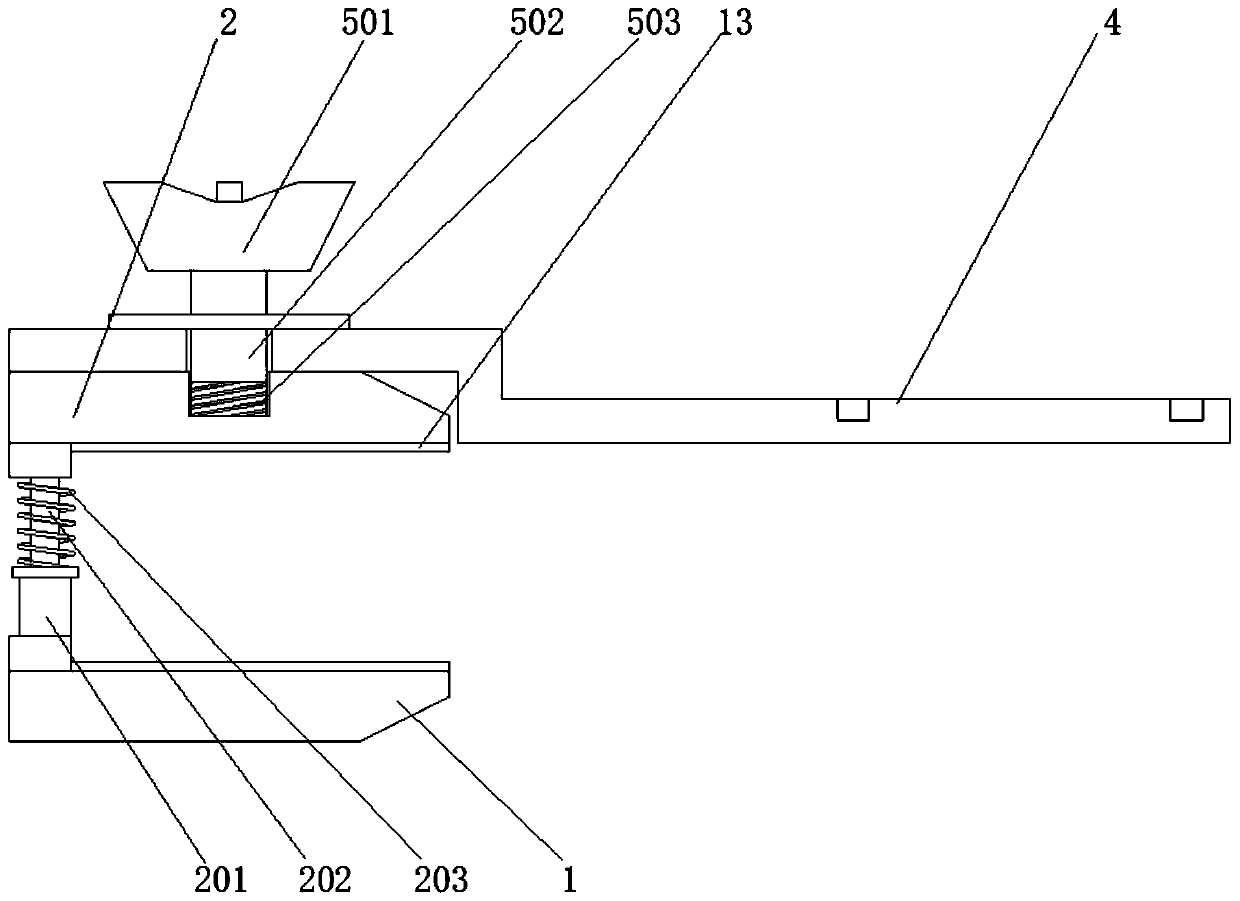Postoperative wound protection device for hemodialysis nursing
A protective device and wound technology, applied in medical science, hospital beds, hospital equipment, etc., can solve the problems of wound compressive injury, difficult upper extremity venous return, and anti-compression protection, so as to help upper extremity venous return, reduce bleeding and hematoma , the effect of improving the stability
- Summary
- Abstract
- Description
- Claims
- Application Information
AI Technical Summary
Problems solved by technology
Method used
Image
Examples
Embodiment Construction
[0026] The following will clearly and completely describe the technical solutions in the embodiments of the present invention with reference to the accompanying drawings in the embodiments of the present invention. Obviously, the described embodiments are only some, not all, embodiments of the present invention. Based on the embodiments of the present invention, all other embodiments obtained by persons of ordinary skill in the art without making creative efforts belong to the protection scope of the present invention.
[0027] see Figure 1-5 , a postoperative wound protection device for hemodialysis care, comprising a first pressure plate 1, an elastic component 2, a sleeve rod 201, a movable rod 202, a spring 203, a second pressure plate 3, a rotating plate 4, a fixed component 5, a handle 501, Polished rod 502, threaded rod 503, mounting plate 6, connecting bolt 7, lifting assembly 8, column 801, pole 802, fixing bolt 803, supporting plate assembly 9, supporting plate 901,...
PUM
 Login to View More
Login to View More Abstract
Description
Claims
Application Information
 Login to View More
Login to View More - R&D
- Intellectual Property
- Life Sciences
- Materials
- Tech Scout
- Unparalleled Data Quality
- Higher Quality Content
- 60% Fewer Hallucinations
Browse by: Latest US Patents, China's latest patents, Technical Efficacy Thesaurus, Application Domain, Technology Topic, Popular Technical Reports.
© 2025 PatSnap. All rights reserved.Legal|Privacy policy|Modern Slavery Act Transparency Statement|Sitemap|About US| Contact US: help@patsnap.com



